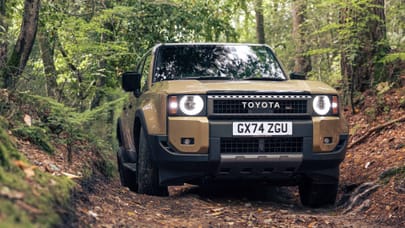
Opinion: it's not the cars that change, but us
Cars are much like people, says Paul Horrell – in their old age we can learn to love them again
If you stick around for a long time, people get fed up with you. But hang in there and eventually they begin to love you again. I give you Paul McCartney’s headlining at Glastonbury and Abba’s sold out avatar gigs, or the remarkable rehabilitation of ELO. All have lived through eras of tragic uncoolness. But now people love to see them retread the old stuff. Cars, if they stay in production long enough, can follow that U-shaped curve of affection.
By the time it was 20 years old in the late Seventies, the original Mini was widely derided. It had to face up against the first wave of superminis, the Fiat 127 and MkI editions of the Renault 5 and Polo and Fiesta. In that role it was a disaster, a tired, cramped and irrelevant old stager. Then came the Metro to do the job of BL’s mainstream small hatch, and the Mini could step aside into a new role. It effectively retired, no longer having to work for a living. Towards the end of its life it became a cheeky old entertainer, a national treasure.
The Lotus Elise departed last year, to much mourning. It had been around 25 years. In its youth we loved its gorgeous steering, brilliant handling, happy ride and vivid engine. By late-middle life it had lost some of the allure, as people reckoned it was a patchy machine, doubtful in quality and limited in relevance, left behind in the cult of more poooooower. But at the end everyone treasured it as an unmatched way to connect a driver to the road. It hadn’t changed – I drove the last one straight after the first and the main difference was how much rattlier the old one was.
What about the Lamborghini Aventador? During its life it did get better in some details, but its character remained a constant. There was a point as rivals gained cleverer transmissions and suspensions and electrified powertrains that the Aventador started to look like a rhinoceros increasingly befuddled by old age. Then it became unique and something to treasure in an age when there were no more multi-cylinder naturally aspirated supercars. Now it’s gone and people are blotting the tears from their eyes.
And the Land Rover. The coil-sprung 90 and 110 were launched in the early Eighties. Their permanent four-wheel drive and fancy springs made them modern for that era. But by the late Nineties everyone in their right mind who had a serious use for a cross country vehicle that could carry and tow had got themselves a Japanese pickup. If they wanted to shift people they had a Shogun. The Land Rover (by then called Defender, a name I loathe) was charismatic but old, uncomfortable, costly and unreliable. But once the people who chose their vehicles rationally had moved on, the way was clear for the Defender to be adopted by those who wanted an irrational vehicle for leisure. The age, discomfort, cost and unreliability were ‘character’.
These four cars weren’t notably better in their dotage than in their unloved mid-life. They didn’t change. The world around them did. Their qualities became unique, and they ascended the second half of their U-curve.
Top Gear
Newsletter
Thank you for subscribing to our newsletter. Look out for your regular round-up of news, reviews and offers in your inbox.
Get all the latest news, reviews and exclusives, direct to your inbox.
Trending this week
- Car Review
BMW 1 Series
- Top Gear's Top 9
Nine dreadful bits of 'homeware' made by carmakers








